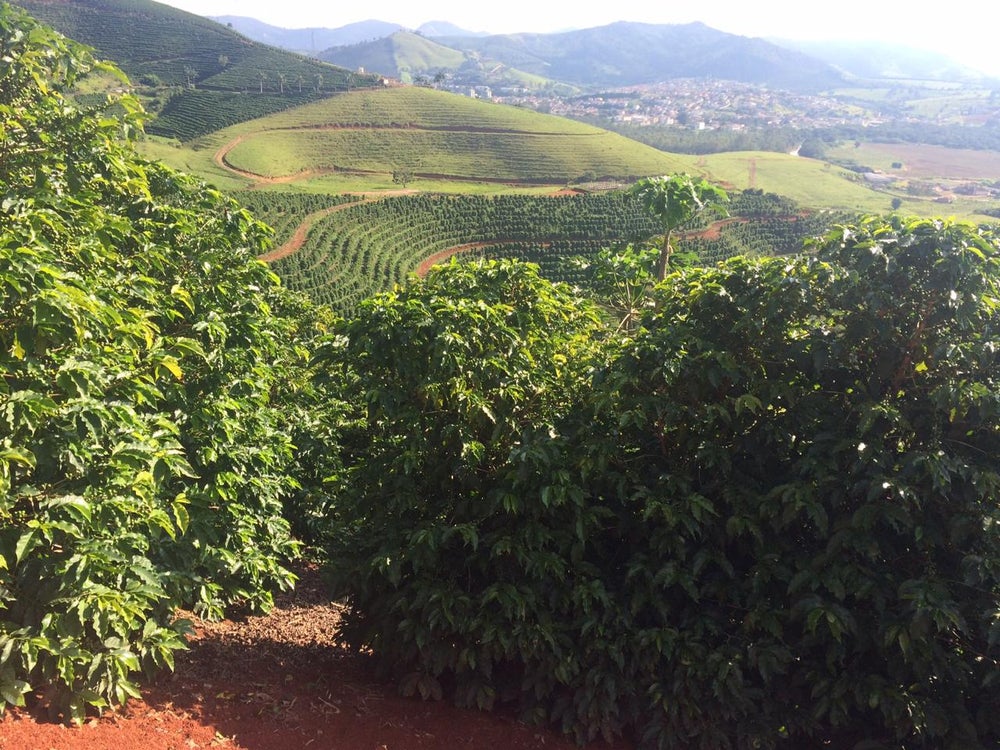About This Coffee
The history of Fazenda Santa Maria is also the history of women whose hard work and careful decision making preserved the farm for future generations.
Maria Dorotéia Rennó Moreira grew up on Fazenda Santa Maria and has managed the farm for over a decade. She can trace her family history back to Colonel Luís da Cunha Pinto Júnior and his daughter Francisca Vilela da Costa.
When Zico Rennó inherited the farm from his father João Francisco Rennó in the 1800s he shared his coffee-producing knowledge with his brothers and sisters. As the siblings prospered, they expanded the farm and purchasing more land.
When Benedito Rennó and his wife, Estephânia, owned Fazenda Santa Maria, Estephânia took charge of the drying patio. It is her focus on improving post-harvest practices that has continued to benefit the owners of Fazenda Santa Maria to this day.
Maria Ignez Rennó Moreira grew up on a neighboring farm and had many fond memories of the ways women of the Rennó Moreira family were a vital part of decision-making and management at Fazenda Santa Maria. She and her husband, Huet Moreira, purchased Fazenda Santa Maria in 1999.
Huet and Maria Ignez invested their hearts in the farm. They taught their children about coffee production from their years and devised fun ways to challenge and educate their children.
As they grew up, Huet and Maria gave each of their children a row of coffee to tend to and taught them proper harvesting and processing techniques. Their daughter and current manager of the farm, Maria Dorotéia Rennó Moreira affectionately remembers the many fun days that she and her siblings spent learning about coffee cultivation.
To continue the success of Fazenda Santa Maria, Maria Moreira is investing in expanding the environmental standards on the farm. Working with Sucafina, Maria has gotten Fazenda Santa Maria IMPACT-verified. IMPACT's values of protecting the environment and safeguarding the rights of workers. With their new IMPACT verification, Maria and Huet aim to improve the sustainability of their farm and reach new markets.
Harvest & Post-Harvest
Unusually for Brazil, cherry is selectively handpicked at Fazenda Santa Maria. Cherry is delivered to the farm’s processing center and land to dry on patios. Cherry is turned frequently to ensure even drying.
About Mantiqueira de Minas Region
Coming from the native Tupi word “amantikir,” Mantiqueira means “where the mountains cry.” This micro-region is located on the slopes of the Mantiqueira Mountains on the Minas Gerais side. The land borders São Paulo and Rio de Janeiro states. More than 7,000 coffee growers collectively produce up to 1 million bags annually.
The region has a long tradition of coffee growing with many generations participating in the production of excellent, world-renowned specialty coffee. In 2011, Mantiqueira gained its PGI certificate for having a differentiated sensory profile known for floral and citrus notes, a dense and creamy body, medium-bright acidity and a long, sweet finish.
Coffee in Brazil
Just under 40% of all coffee in the world is produced in Brazil - around 3.7 million metric tons annually. With so much coffee produced, it’s no wonder that the country produces a wide range of qualities. Brazil produces everything from natural Robusta, to the neutral and mild Santos screen 17/18, to the distinctive Rio Minas 17/18. In recent years, Brazilian producers have also begun investing more heavily in specialty coffee production. Through our in-country partners in Brazil, including our sister company, we are able to provide a wide range of Brazilian coffees to our clients: from macrolot to microlot.
Today, the most prolific coffee growing regions of Brazil are Espirito Santo, São Paulo, Minas Gerais, and Bahia. Most Brazilian coffee is grown on large farms that are built and equipped for maximizing production output through mechanical harvesting and processing. The relatively flat landscape across many of Brazil’s coffee regions combined with high minimum wages has led most farms to opt for this type of mechanical harvesting over selective hand-picking.
In the past, mechanization meant that strip-picking was the norm; however, today’s mechanical harvesters are increasingly sensitive, meaning that farms can harvest only fully ripe cherries at each pass, which is good news for specialty-oriented producers.
In many cases and on less level sections of farms, a mixed form of ‘manual mechanized’ harvesting may be used, where ripe coffee is picked using a derriçadeira – a sort of mechanized rake that uses vibration to harvest ripe cherry. A tarp is spanned between coffee trees to capture the cherry as it falls.
With the aid of these newer, more selective technologies, there’s a growing number of farms who are increasingly concerned with – and able to deliver - cup quality.

